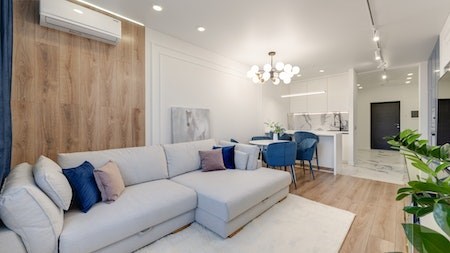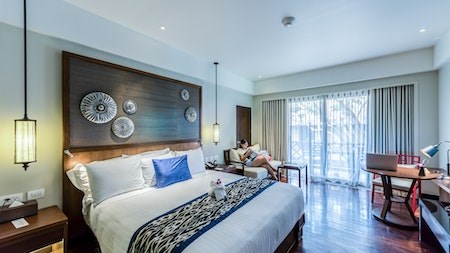Moving into a rented home often means dealing with existing decorative elements that you wouldn’t necessarily have chosen for yourself. For example, wall-to-wall carpeting is one of the most obtrusive, and usually, you can't remove it when renting - no matter how much you dislike it.
If you have recently started renting a home with a carpet that doesn’t meet your design needs, the good news is that it is possible to temporarily cover carpets in budget-friendly and efficient ways.
Options
There are a few ways you can cover up your carpet without removing it.
The simplest method is to cover it with a loose carpet or carpet runner. This will add some colour and pattern to the room and will also be softer underfoot.
If the old carpet is visible around the perimeter of your rooms or hallways, choose a runner that complements the existing flooring. If the carpet is neutral, a bold runner could work well. If the carpet is bright or patterned, a more subtle runner would be a better option.
You can also install other flooring types on top of the existing carpet. Ensure the type of flooring you choose is compatible with your existing flooring and durable enough to stand up to traffic.
Interlocking vinyl and PVC matting are durable and practical, making ideal temporary floor coverings.
Peel stick floor and carpet tiles are hardwearing and available in various designs and colours. They are fairly easy to install, so you may be able to do the work yourself.
Vinyl
Installing vinyl flooring over carpeting is relatively straightforward, and most people can do it on their own.
Before you install vinyl planks over your carpet, you need to know that the steps are different for low-pile or thin carpets and high-pile or thick ones. You can install vinyl planks directly on top of a low-pile carpet, but for a plush, thick carpet, you first need to add a more solid base.
If you place vinyl planks directly onto a high-pile carpet with thick carpet padding, your floorboards will flex. They can easily shift and unlock your floating floor, so a little more preparation is required. To create a more stable surface for the planks to rest on, lay down a subfloor on top of the carpet with a sheet of plywood that is at least 0.64 cm thick.
For thin, low-pile carpets, thinner vinyl planks should work well. However, thicker planks that are less flexible give better results.
Cleaning
Before installing alternative flooring on top of a carpet, make sure that the carpet has no rot and there are no damp portions anywhere. You don’t want moulds, bacteria and other contaminants lurking underneath your flooring.
Whichever method you use to cover up your ugly carpets, be sure to take into account the colour and style of your room. This will enable you to find a solution that will be functional as well as attractive.
Writer : Sarah-Jane Meyer





